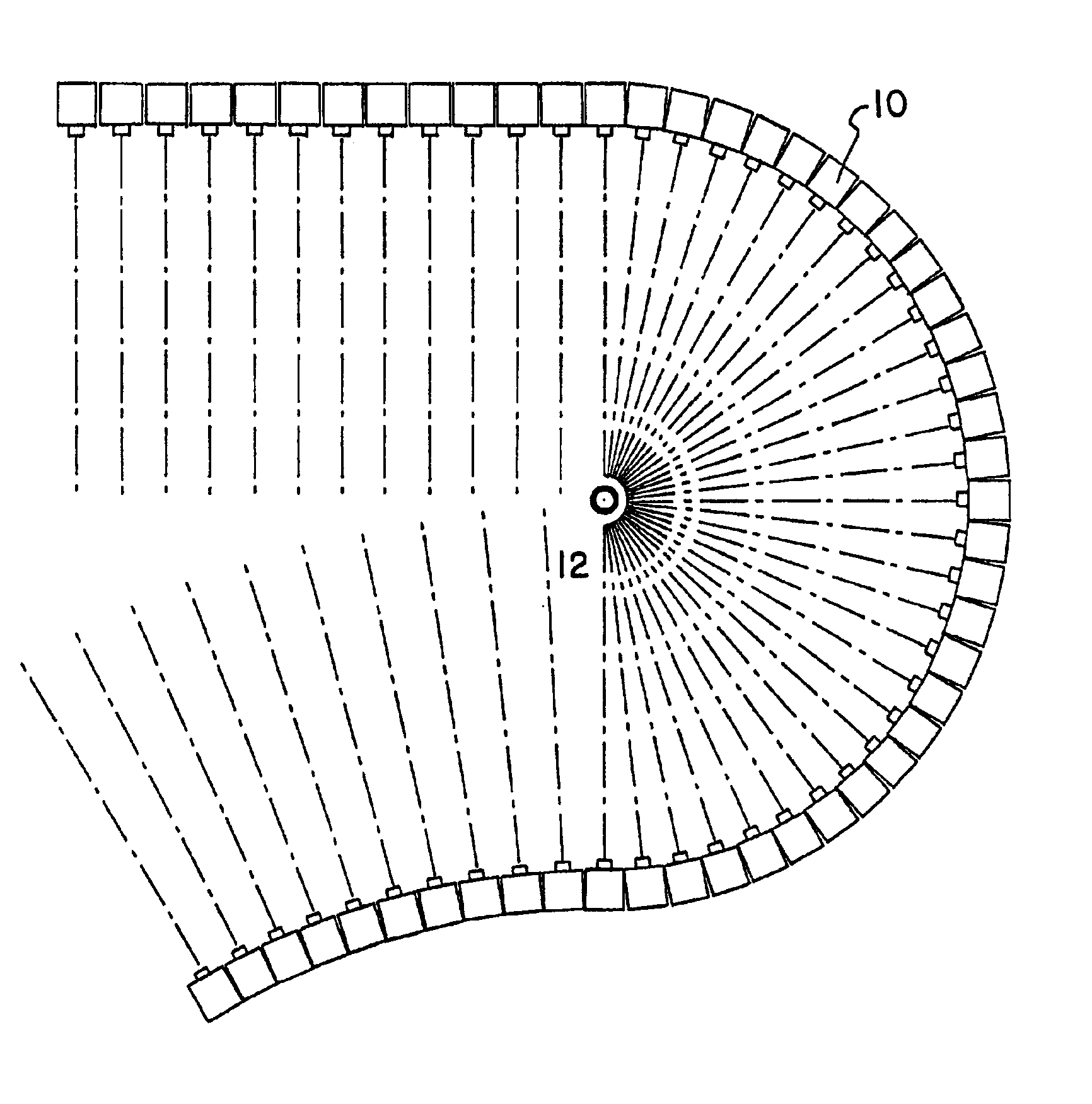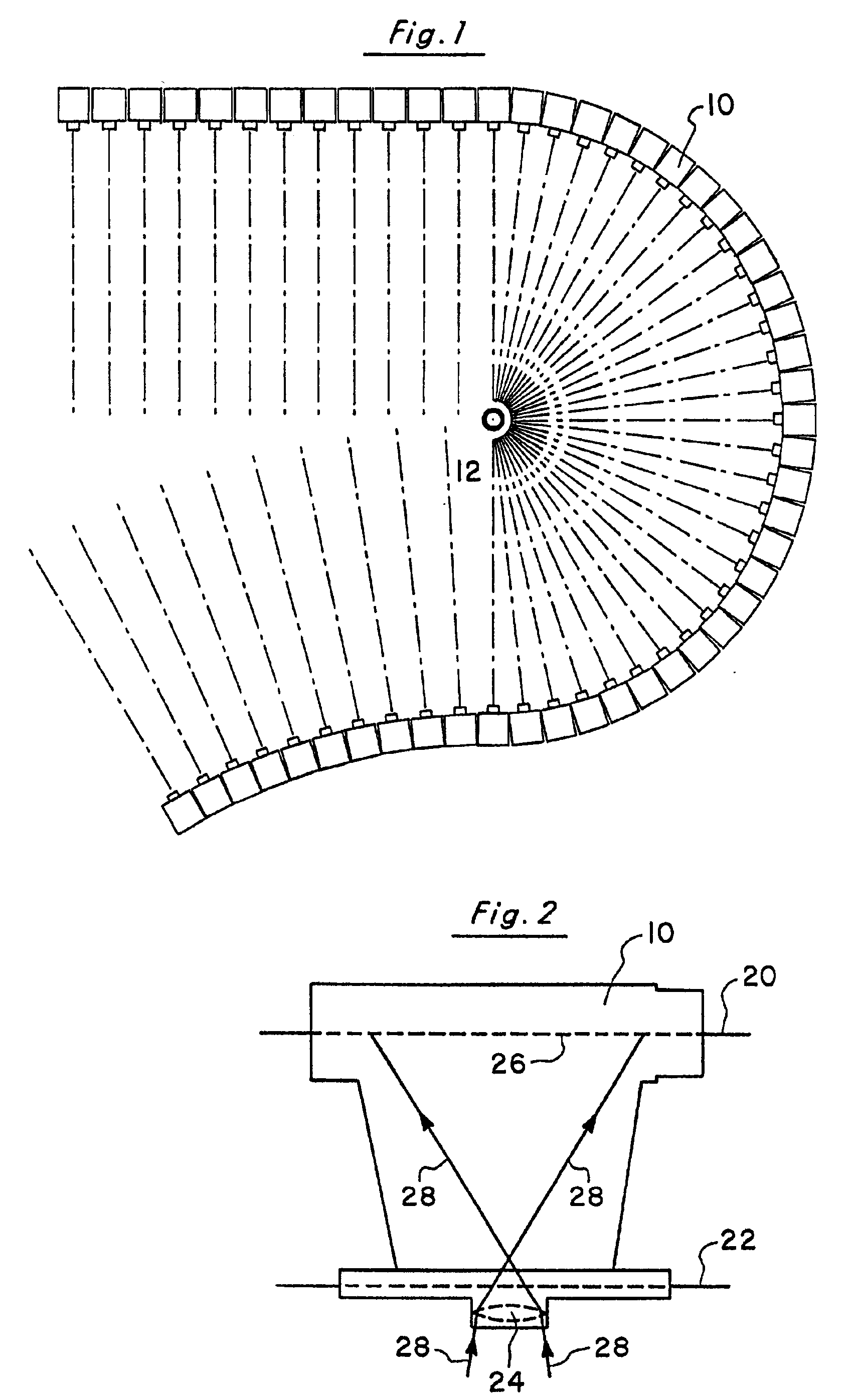System for producing time-independent virtual camera movement in motion pictures and other media
- Summary
- Abstract
- Description
- Claims
- Application Information
AI Technical Summary
Benefits of technology
Problems solved by technology
Method used
Image
Examples
Embodiment Construction
[0048]Turning to FIG. 1, an array of cameras 10 of the present invention is seen focused on a common scene 12. A scene 12 as used in this description is not limited to a single point or object but comprehends an entire view or area. The cameras 10 are deployed as desired to achieve a certain effect along a preselected path, for example, a straight line, a concave arcuate path, or a convex arcuate path. As discussed in more detail below, the shape of the path chosen is limited only by the necessity to maintain a light-tight connection between adjacent cameras 10. As with many methods of recording motion pictures, the present invention can be implemented with both photographic film and videotape. Both means of recording motion pictures (photographic film or videotape) are based on the principle of recording and reconstituting multiple frames of still image information in rapid succession continuously over time. Therefore, references to photographic film and motion picture medium are u...
PUM
 Login to View More
Login to View More Abstract
Description
Claims
Application Information
 Login to View More
Login to View More - R&D
- Intellectual Property
- Life Sciences
- Materials
- Tech Scout
- Unparalleled Data Quality
- Higher Quality Content
- 60% Fewer Hallucinations
Browse by: Latest US Patents, China's latest patents, Technical Efficacy Thesaurus, Application Domain, Technology Topic, Popular Technical Reports.
© 2025 PatSnap. All rights reserved.Legal|Privacy policy|Modern Slavery Act Transparency Statement|Sitemap|About US| Contact US: help@patsnap.com



